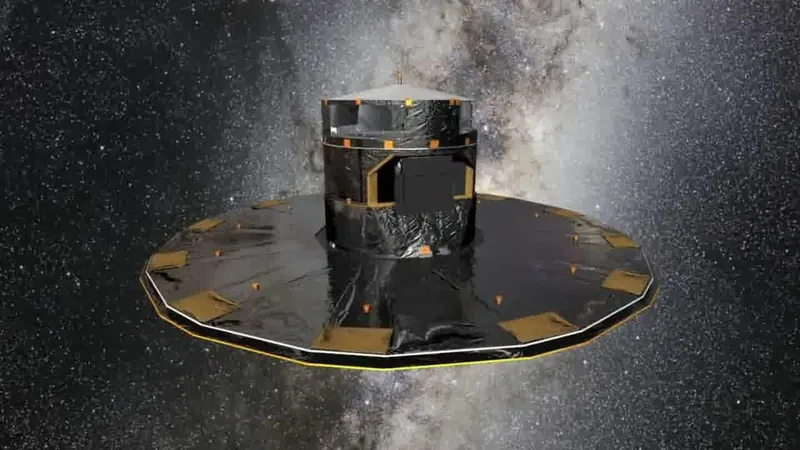
The Retirement of ESA's Gaia Space Telescope: Celebrating a Legacy of Astronomical Insights
2025-03-31
Author: Mei
Introduction
The European Space Agency's Gaia space telescope has officially retired, marking the end of an extraordinary mission that has profoundly impacted our understanding of the cosmos.
Gaia's Mission and Achievements
Project Scientist Johannes Sahlmann emphasized the significance of Gaia's findings, describing the data released as "a unique treasure trove for astrophysical research." This invaluable information has influenced nearly every field within astronomy, raising exciting new questions and avenues for exploration.
Gaia, launched in December 2013, was designed for a five-year mission but far exceeded expectations, operating well beyond its planned lifespan.
Decommissioning Procedures
As of now, the spacecraft is nearing the end of its fuel reserves, prompting a carefully orchestrated plan for its decommissioning. In line with ESA's commitment to responsible mission disposal, the Gaia team aimed to prevent the spacecraft from drifting back toward its original position near the second Lagrange point (L2) in the Sun-Earth system, ensuring minimal interference with other missions operating in that critical area.
On March 27, a series of meticulous deactivation procedures took place. Gaia was maneuvered away from L2 into a stable retirement orbit around the Sun. This careful procedure significantly reduces the risk of Gaia coming within 10 million kilometers of Earth for at least the next century, safeguarding both the telescope and future space missions.
Legacy and Future Use of Data
The ESA team’s systematic approach involved shutting down and deactivating each of Gaia’s instruments and subsystems sequentially before corrupting its onboard software to complete the decommissioning process. Although the spacecraft has fallen silent, its legacy will continue to resonate within the scientific community.
Gaia's massive data archive remains an essential resource for ongoing research in multiple domains, including galactic archaeology, stellar evolution, and exoplanet studies.
Conclusion and Future Exploration
In an exciting twist for the future of space exploration, the data collected by Gaia will be utilized by ESA’s upcoming Euclid spacecraft and the Plato mission. These missions aim to investigate exoplanets around stars that Gaia has identified, enabling scientists to delve even deeper into the mysteries of our universe.
With Gaia setting a remarkable precedent, its retirement heralds both an end and a new beginning in the quest for knowledge about our galaxy and beyond. The impact of Gaia will undoubtedly shape astrophysical research for decades, as scientists continue to unlock the secrets hidden within its vast treasure trove of data.


 Brasil (PT)
Brasil (PT)
 Canada (EN)
Canada (EN)
 Chile (ES)
Chile (ES)
 Česko (CS)
Česko (CS)
 대한민국 (KO)
대한민국 (KO)
 España (ES)
España (ES)
 France (FR)
France (FR)
 Hong Kong (EN)
Hong Kong (EN)
 Italia (IT)
Italia (IT)
 日本 (JA)
日本 (JA)
 Magyarország (HU)
Magyarország (HU)
 Norge (NO)
Norge (NO)
 Polska (PL)
Polska (PL)
 Schweiz (DE)
Schweiz (DE)
 Singapore (EN)
Singapore (EN)
 Sverige (SV)
Sverige (SV)
 Suomi (FI)
Suomi (FI)
 Türkiye (TR)
Türkiye (TR)
 الإمارات العربية المتحدة (AR)
الإمارات العربية المتحدة (AR)